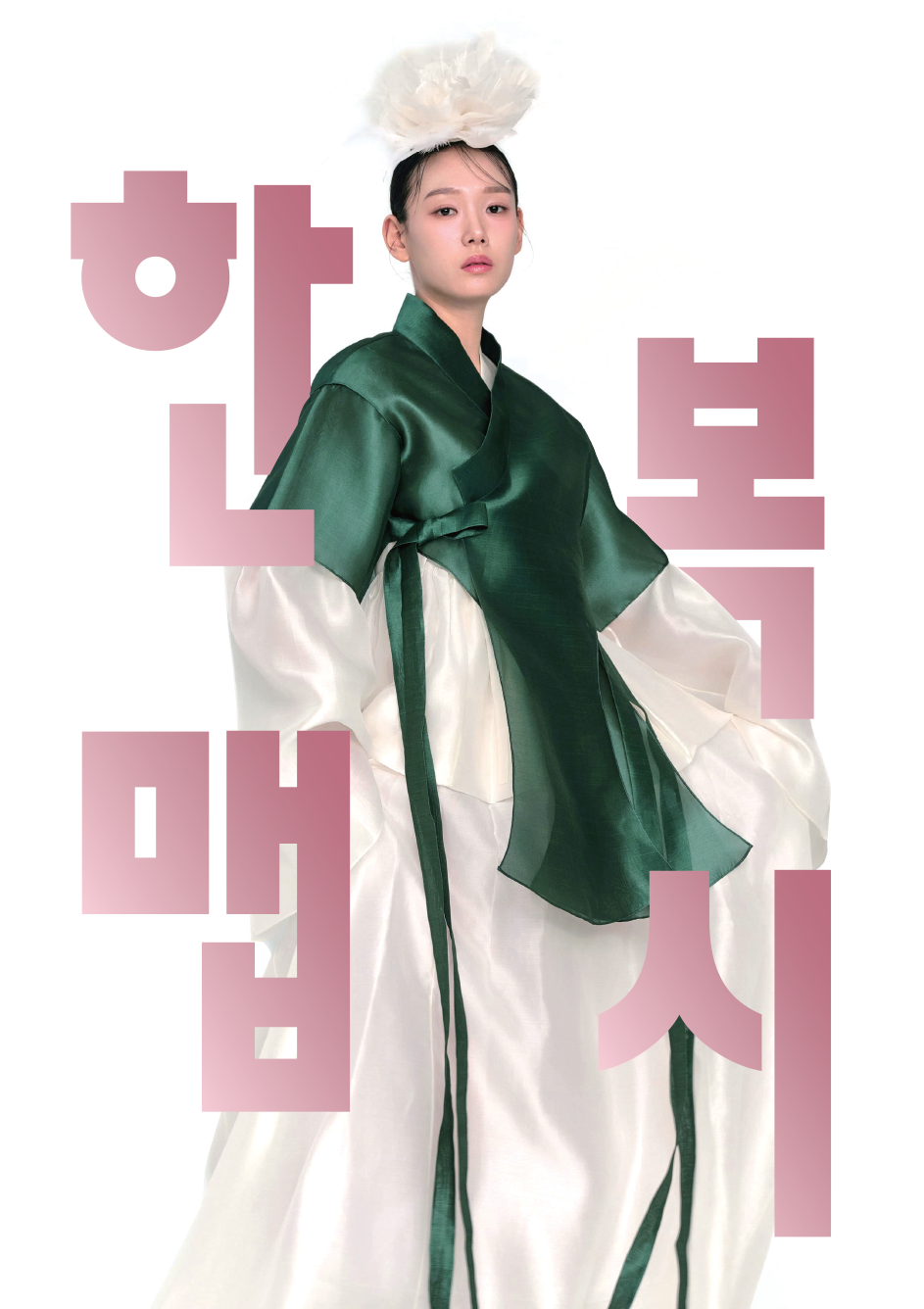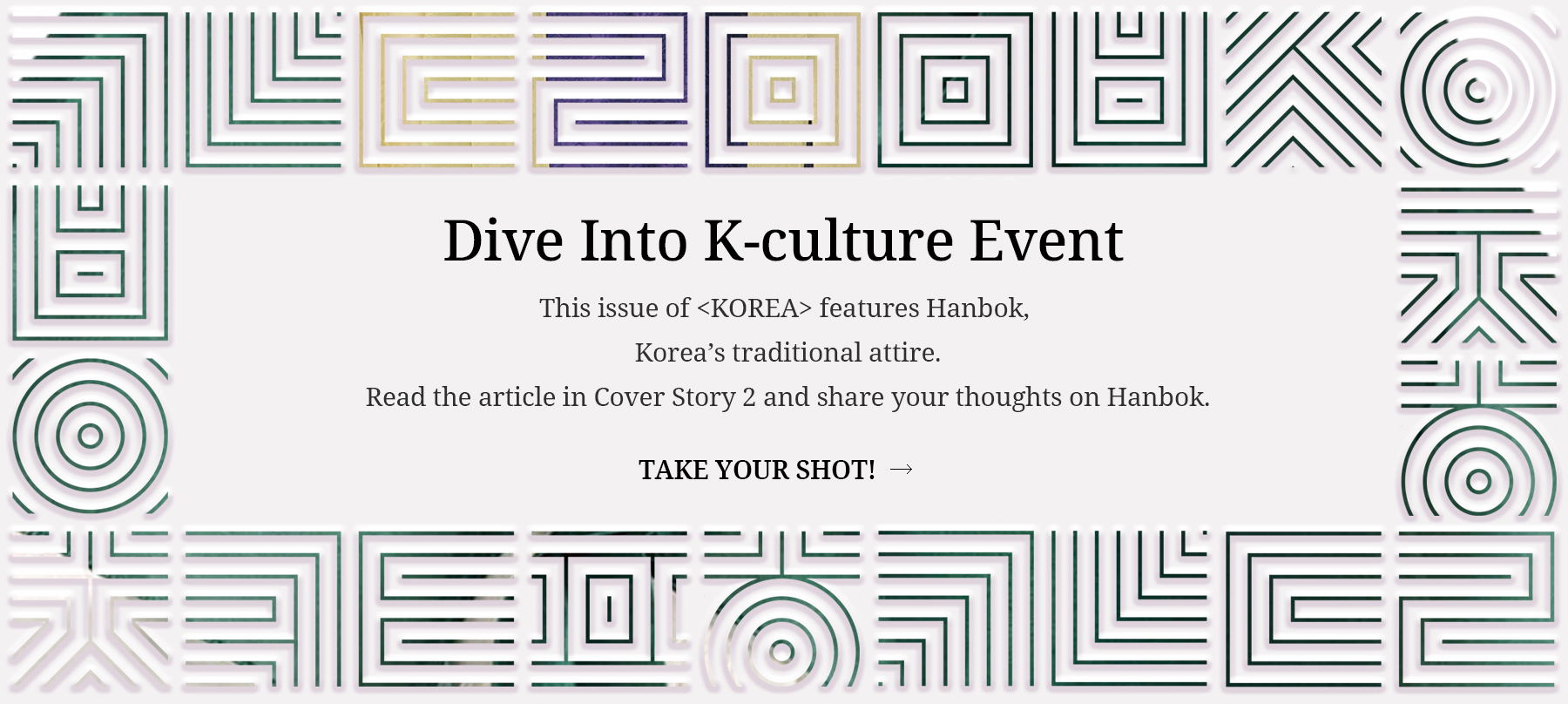





Hanbok × Maepsi
The word 맵시 (maepsi) used on the cover is a pure Korean term meaning “pleasing form.” It’s commonly used to describe the unique lines of clothing. This word merges with 한복 (Hanbok) to describe the inherent charm unique to Hanbok. The cover features a pictorial for the 2024 Hanbok Wave, organized by the Korean Craft and Design Foundation.
Hanbok is a garment that reflects the essence of Korea. Having evolved alongside Korean history for centuries, Hanbok embodies Korea’s wisdom, beauty and values, now shining on the global stage.
한복은 한국의 정수가 담긴 옷이다. 오랜 세월 간 한국의 역사와 함께한 만큼, 한복에는 조상들의 지혜, 한국이 추구하는 아름다움, 한국이 지키고자 하는 태도가 응축되어 있다. 한류의 중심에 선 한복은 세계를 향해 나아간다.

Hanbok, Korea’s traditional attire, evolves while preserving its essence, uniting eras, cultures and people. This article highlights three individuals shaping its role today.
There are several ways to get a taste of Hanbok with just a modest investment of your time. Whether you want to see the stylings of Korean celebrities or borrow some Hanbok to try it on yourself, there are ample opportunities to experience the charms of this age-old costume.

Hanbok embodies the long history of the Korean peninsula. While Hanbok has changed in various ways over time and continues to evolve, it steadfastly preserves its most important core—the distinctly Korean DNA.


Daejeon
Now known as a paradise for bread lovers and a hub of science and technology, Daejeon is a city that is rich in history.
A century has passed since a railroad first transformed this quiet region, but Daejeon has preserved its past while embracing the vibrant energy of modern life—creating a landscape that feels both new and familiar.
Soy sauce is ubiquitous in East Asian cuisine.
However, many global diners are unaware of the fact that there is more than one type of soy sauce. Ganjang, Korean soy sauce, has a rich history—a saga only matched by its seemingly endless variety and versatility.

Ganjang Mixed Noodles